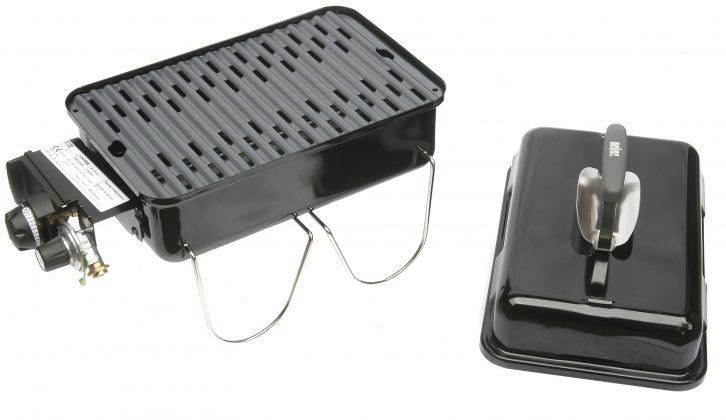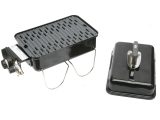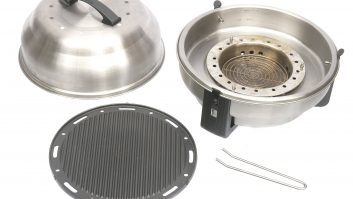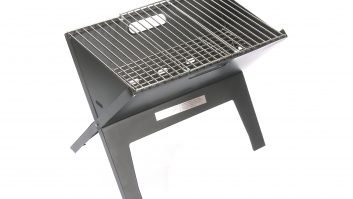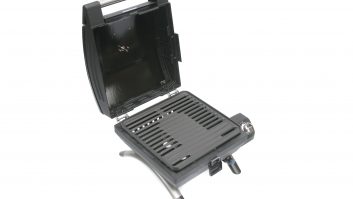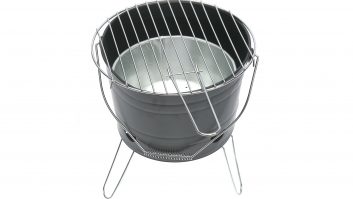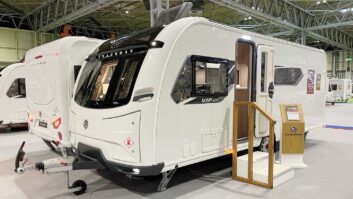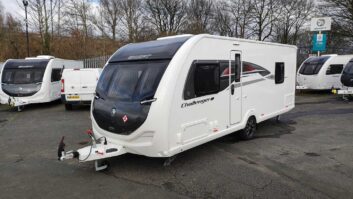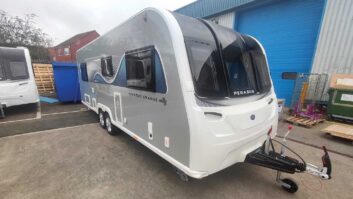Verdict
This isn’t a cheap barbecue, but we like it so much that we’ve given it a five-star rating and have crowned it the Practical Caravan barbecue group test winner.
To see why the Weber has outperformed rivals, check out our reviews of the Quest Folding BBQ, Olpro SAfire, Bodum Fyrkat, Campingaz 1 Series Compact EX CV, the Outwell Cazal, and the SunnCamp Deluxe Bucket BBQ.
Practical Caravan tests a selection of great camping accessories regularly to help you buy the best camping gear to take on holiday.
Pros
Simple to use
High quality product
Offers bbq cooking and grilling
With the lid on, it’s an oven
Gas is less of a fire risk than charcoal
Cons
Expensive
Barbecues are more or less de rigueur on warm summer tours, but it’s almost impossible to mention the ‘B’ word without triggering a debate about which is better: gas or charcoal.
The aficionado’s argument is pretty sound: charcoal as a heat source gives food a unique flavour that gas units simply don’t, and units capable of burning charcoal are as at home with any wood. Using hickory or apple/pear wood can add subtle flavours to pork and beef, for example.
But gas barbecues are certainly practical – there’s no ash to clean up, no black art to getting the thing alight in the first place, and the convenience of being able to cook within minutes of igniting the flame. Using lava rocks, or strategically placed bars, means that fat dripping from heated meat can flash off and flavour the food. Another convincing argument for gas is that you can use it in many hot European countries – which is not the case with charcoal models, due to the fire risk.
For now, though, we’ll leave that debate and concentrate on what makes a camping barbecue good. Pack-down size is important but, so that we don’t discriminate against larger units, here we’ve compared each product’s pack-down volume against the size of its cooking area. We used a similar formula for weight.
Controllability is another important factor if you don’t want to overcook your food.
Gas units cater for this by having a fuel-output control. Ideally, charcoal barbecues should have height-adjustable grilles, so that the food can be placed nearer or further to the heat source as desired. Adjustable vents to the charcoal pit are another good way of ramping the heat up or down.
Given that many sites demand that barbecues sit above a certain minimum height above the ground, we’ve measured to see how far each product’s main body is over ground level. We’ve also checked whether there’s anything supplied to prevent undesirable substances leaking – such as hot fat and oil with gas units, and hot ash with charcoal.
Finally, we’ve noted the barbecues that have additional functions. Some can be used for grilling, for instance – they subject food to heat, but not smoke.
We’ve tested and rated a mixed group of 12 barbecues, and for this review we focus on a Weber barbecue, costing £103, the second most expensive model in our group test.
The Weber Go Anywhere is a gas barbecue that makes it easy to understand why Weber is such a leading brand: it’s the perfect mix of simplicity, quality and versatility.
At 21 x 28 x 56 cm it’s not the smallest unit to transport; but its square shape helps, particularly because it’s robust enough to have other items placed on top of it.
The legs rotate to become secure lid catches or, when down, put 15cm between the base of the unit and the ground.
The design of the grille surface makes both traditional barbecue cooking and grilling possible. Alternatively, put the lid on and you have a small gas oven.
The Weber Go Anywhere gas barbecue is the perfect mix of simplicity, quality and versatility
Technical Specifications
| Size | 21 x 28 x 56cm |
| Fuel | Gas |
| Height from ground | 15cm |
| Selling point | It's a BBQ, grill and small oven |
